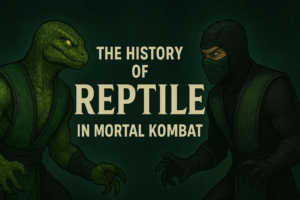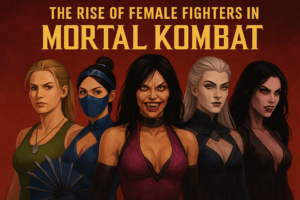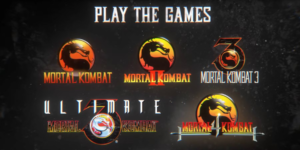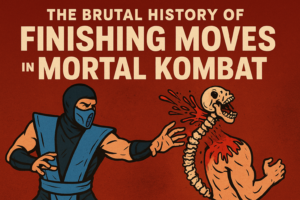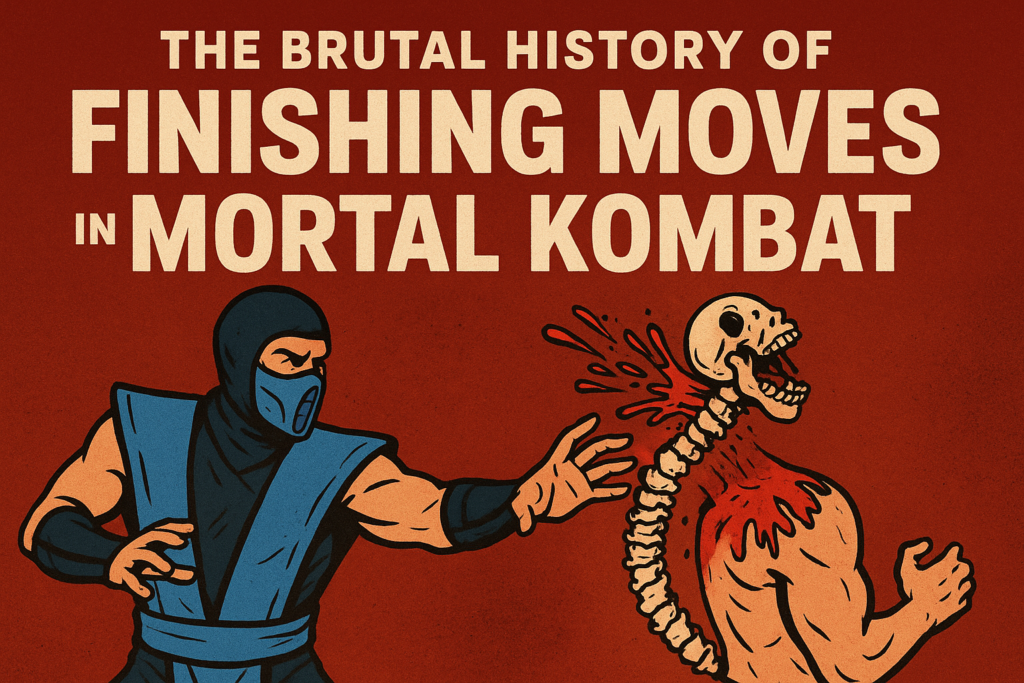
Finish Him 😈

When you hear the phrase “Finish Him!”, you already know what’s coming. Mortal Kombat has built its entire identity around over-the-top finishing moves that shock, entertain, and sometimes make you squirm. From the original arcade release in 1992 to today’s cinematic Fatalities in Mortal Kombat 1, these brutal end sequences have become a cornerstone of the franchise and gaming culture as a whole.
Where It All Started: Mortal Kombat (1992)
The very first Mortal Kombat introduced a concept that set it apart from Street Fighter and other fighters of the era—Fatalities. Instead of ending a match with a simple knockout, players could input a secret combination of buttons at the end of the fight to unleash a gruesome finishing move.
- Scorpion burned his enemies alive with his “Toasty!” fire breath.
- Sub-Zero ripped out spines, creating one of the most controversial images in early gaming.
- Kano tore out hearts, making arcades echo with gasps and cheers.
These original Fatalities sparked outrage from parents and lawmakers, eventually leading to the creation of the ESRB rating system. Without them, gaming might not even have content ratings today.
Expanding the Arsenal: Friendships, Babalities, and Animalities
As the series evolved in Mortal Kombat II and Mortal Kombat 3, developers leaned into the absurd. They added new types of finishing moves that went beyond gore:
- Friendships let fighters end battles with kindness, like handing out balloons.
- Babalities transformed opponents into crying babies.
- Animalities allowed characters to morph into beasts for wild kills.
These playful alternatives balanced out the violence while giving players more ways to humiliate opponents.
3D Era Evolution: Brutalities and Cinematics
When Mortal Kombat moved into the 3D era with titles like Mortal Kombat 4, Deadly Alliance, and Deception, finishing moves became flashier and more cinematic. Brutalities also made their debut—long combo strings that literally made enemies explode.
While some fans felt the 3D era’s fatalities weren’t as sharp as the originals, they pushed the franchise toward more creativity in execution and camera work.
The Modern Era: From Mortal Kombat 9 to Mortal Kombat 1
The 2011 reboot, Mortal Kombat 9, marked a true return to form. Fatalities became bloodier, more detailed, and fully animated with modern graphics. X-Ray moves introduced slow-motion shots of bones breaking and organs shattering, adding a new layer of brutality mid-match.
In Mortal Kombat 11, the introduction of Fatal Blows gave players cinematic comeback opportunities, while classic Fatalities were updated with next-gen visuals.
Now in Mortal Kombat 1 (2023), finishing moves are a spectacle. Characters deliver movie-level executions with creative kills that blend violence with personality—keeping alive the tradition that made the series infamous.
Why Finishing Moves Matter in Gaming
Mortal Kombat’s finishing moves aren’t just about gore—they’re about identity. They gave players bragging rights in arcades, inspired memes, and cemented Mortal Kombat as the most notorious fighting game in history. Each Fatality tells you something about the character performing it, blending fighting style with personality in ways that simple knockouts never could.
From Spine Rips to Pop Culture Legends
Over 30 years later, finishing moves are still Mortal Kombat’s signature. They’ve influenced countless games, been parodied in movies and TV shows, and sparked conversations about violence in media. What started as a hidden mechanic in 1992 has grown into a pop culture phenomenon—proving that sometimes, the end of the fight is just as important as the fight itself.
For more Mortal Kombat, FGC, and general gaming content follow @thekombatpro and @karolinakombat on Instagram. Also make sure to download the Kombat Pro app for iOS and stay on top of all of the latest MK news, lore, and stories. Have a nice day!
